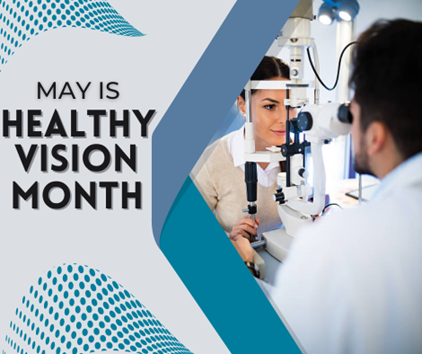
It’s Healthy Vision Month, established by the National Eye Institute in 2003. Our practice agrees to spread awareness to our patients and educate you about the importance of eye health this month and every day of the year. We encourage you to find ways to be healthier, so your vision will last a lifetime. One aspect of a healthy lifestyle is eating the right foods. Healthy choices like a colorful diet rich in whole grains, vegetables, and fruits would greatly benefit your overall health and your eyes.
Scheduling regular eye exams and making healthy choices can help reduce the risk of getting some eye diseases. Also, healthy options can minimize vision loss or slow down the condition if you have been diagnosed with age-related macular degeneration, cataracts, diabetic retinopathy, or glaucoma.
Here are four amazing foods recommended by the American Academy of Ophthalmology to include in your diet that can keep your eyes healthy.
Kale
Leafy green vegetables, like kale, are high in lutein and zeaxanthin, two nutrients found in the healthy eye that are believed to lower your risk for age-related macular degeneration (AMD) and cataracts. One large study showed that women with diets high in lutein were 23 percent less likely to develop cataracts than those with low diets. Kale is not your vegetable of choice? Not to worry. Other dark leafy green vegetables, like spinach, romaine lettuce, collards, and turnip greens, also contain significant amounts of lutein and zeaxanthin. Eggs are also a good source of these nutrients, as are broccoli, peas, and corn.
Salmon
Some studies suggest that diets rich in omega-3 fatty acids from cold-water fish like salmon, sardines, tuna, and halibut help reduce the risk of developing eye disease later in life. A 2010 study from Johns Hopkins found that people with a diet high in omega-3 fatty acids were much less likely to develop AMD (age-related macular degeneration).
Oranges
Oranges and all of their citrus families, such as tangerines, grapefruit, and lemons, are high in Vitamin C, an antioxidant critical to eye health. Scientists have found that your eyes need relatively high levels of Vitamin C to function properly, and antioxidants can prevent or at least delay cataracts and AMD. There are other foods that offer benefits similar to oranges, including strawberries, peaches, red peppers, and tomatoes.
Black-Eyed Peas
Legumes of all kinds, including black-eyed peas, lima beans, kidney beans, and peanuts, contain zinc, which is an essential trace mineral that is found in high concentrations in the eyes. Zinc also may help protect your eyes from the damaging effects of light. Other food options high in zinc include fortified cereals, lean red meat, oysters, and poultry.
Most people think of one vegetable, carrots, as a great food choice to keep your eyes healthy. Carrots are nutrients that help with night vision and are high in beta-carotene. Also, other orange-colored fruits and vegetables to add to your plate, like sweet potatoes, apricots, and cantaloupe, are excellent choices. The overall key to healthy vision is to keep your diet colorful, which will help keep your eyes healthy and don’t fall behind in getting your eye exam.
Is it time to schedule a comprehensive eye exam? Call TODAY to schedule your appointment!

References: American Academy of Ophthalmology, American Optometric Association, and National Eye Institute
The content is researched and vetted by the American Academy of Ophthalmology. American Optometric Association, and National Eye Institute. This blog provides information and discussion about eye health and related subjects. The content provided within this blog and any linked materials are not intended and should not be considered medical advice. If the reader or any person has a medical concern, they should consult with an appropriately licensed physician.
